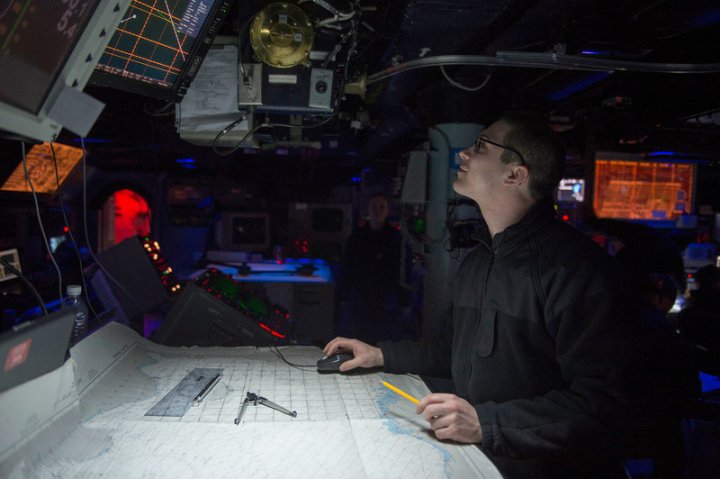
Until about the 1970s, celestial navigation was still one of the main methods of course charting and location tracking for Navy officers. The US military began launching GPS satellites into orbit in the 70s, and the Navy made an official transition from celestial navigation to electronic systems in the year 2000. Now, the Navy’s version of Google Maps is the Voyage Management System. It uses a number of tools including GPS and radar technology to accomplish complex navigation and ship charting in the ocean.
But GPS technology, for all its benefits and goofy in-car navigation commercials, is also extremely vulnerable. In a situation of war, the United States’ GPS satellites could theoretically be shot down or knocked out of orbit. More likely, the military’s GPS signal could be hacked and manipulated, or even jammed completely. The vulnerability of GPS has caused concern for military groups that rely heavily on its accessibility: “We use it to synchronize all military operations, we use it to navigate everywhere – it’s just something the US military can’t live without”, said former Air Force officer Brian Weeden.
Weeden now works with the Secure World Foundation, a nonprofit organization dedicated to security issues that occur in our outer space activities. According to him, Russian and Chinese developers likely already have the capability to jam the specific GPS signal used by the US military. And even without foul play, anyone with a GPS navigation in their car or on their smart phone can tell you that devices act up, and accidents happen. At least once in the last 10 years, a Navy ship ran aground in part due to GPS issues. The Navy hopes that the curriculum change will encourage a deeper understanding of celestial navigation so that if anything should go wrong with GPS technology, officers will still be able to stay safe and carry out missions.
Editors' Recommendations
- U.S. may call a halt to its civilian drone program over security fears
- U.S. Navy is working on making its fleet invisible to computerized surveillance


